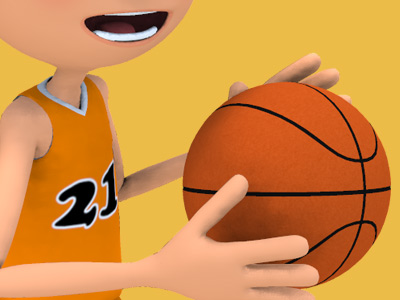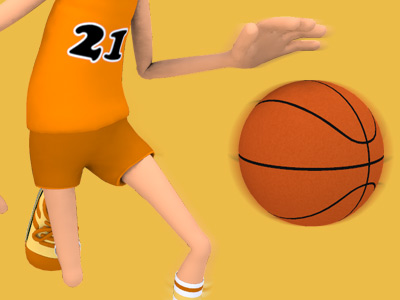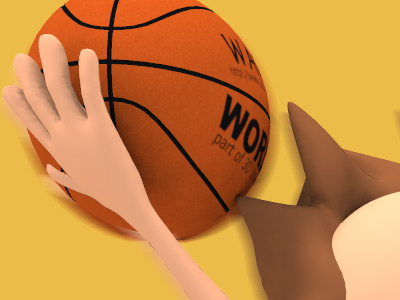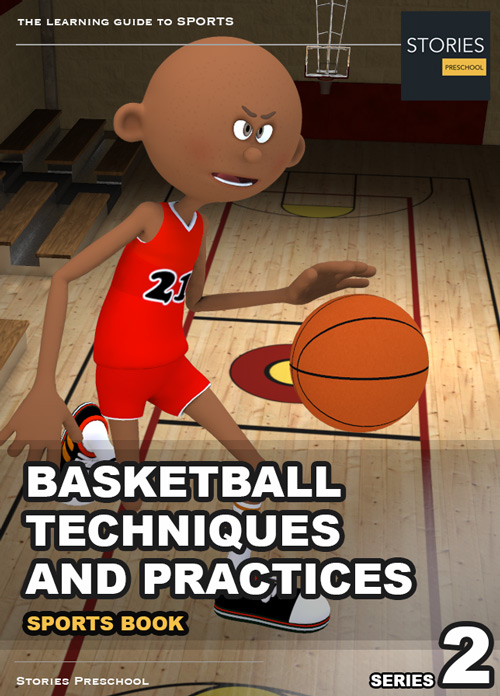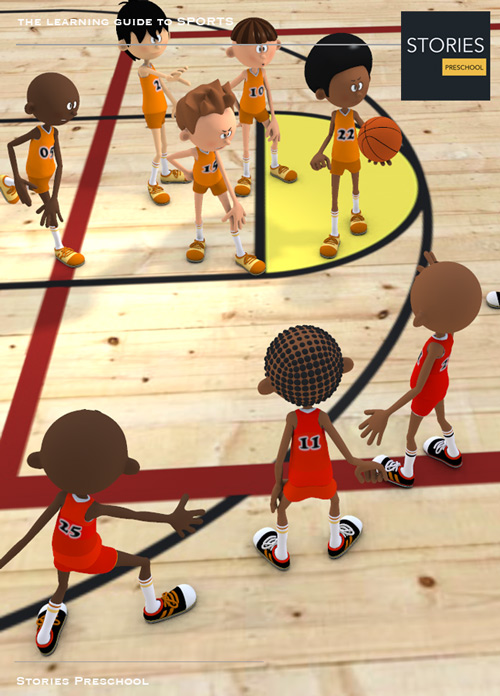Basketball

Basketball Zone Defense Plays
Zone defenses requires that a defender cover an area on the court, and does not follow a check, but covers a check that comes into their area. A zone defense can be used in virtually all sports where defensive players guard players on the other team. The following description refers specifically to basketball.

The names given to zone defenses start with the number of players on the front of the zone (farthest from the goal) followed by the numbers of players in the rear zones. For example, in a 2–3 zone two defenders are covering areas in the top of the zone (near the top of the key) while three defenders are covering areas near the baseline.
Half-court zone defense
- Line defense
- 2-3 zone defense
- 3-2 zone defense
- 1-3-1 zone defense
- 1-2-2 zone defense
- Amoeba defense
- Match-up zone defense
- Trap Zone
Full-court pressure defense
- 1-2-2 Viking press
- 2-2-1 box press
- 1-2-1-1 diamond press
- Half-court press
- Full-court press
- Match-up press
When a team plays a zone, the defenders must keep their hands up and in passing lanes and quickly adjust their positions as the ball and the offensive players move around. Teams that successfully play zone defenses are very vocal and effectively communicate where they, the ball, and their opponents are or will be.
Teams playing a zone occasionally try to "trap" the ball handler, an aggressive strategy of double-teaming the ball carrier. While this tactic may cause a turnover, it leaves one or more players on the offense undefended. The undefended player(s) are generally schemed to be on the opposite side of the court, away from the ball, so any attempt to pass the ball to them would result in long distance pass or a relay pass by a third offensive player, allowing the defense to recover. Good ball handlers can also try to "split" the trap by bringing the ball through the space in the middle of the two trapping defenders, creating an instant advantage for the offense.
Zone defenses were prohibited in the National Basketball Association prior to the 2001–2002 season. The NBA now permits the use of zones, though most teams don't use them as a primary defensive strategy, and defenses featuring an unguarded defender inside the free-throw lane are now disallowed (a violation that results in a defensive three-second violation, which is a technical foul that was also implemented in the 2001–2002 season). The Dallas Mavericks are an example of an NBA team that regularly uses zone defenses. During the 2011 Playoffs, their zone defense was credited with slowing down offenses, forcing opposing players to determine which defense they were playing. Zone defenses are more common in international, college, and youth competition because the defensive three-second violation makes it difficult for NBA teams to play zone, since such defenses usually position a player in the middle of the key to stop penetration.
Advantages
Some of the reasons for using a zone defense are:
- The opposing team has a player or players too quick (in the case of guards) or too big (in the case of forwards or centers) for a man-to-man defense to be effective.
- Many zones pack defenders in the lane but allow the offensive team to take long-range shots. If the opponents are poor long-range shooters, a zone can be very effective.
- Unless trapping is involved, zone defenses typically don't involve aggressive pressure on the ball handler and allow the offensive team to easily pass the ball around the perimeter. This can allow the offense to use more time before a shot is attempted, an advantage for teams wanting to slow the tempo of a game.
- A poor defensive player can often be "hidden" in a zone because teammates can more easily help if he or she is beaten.
- A zone can help players in danger of fouling out by taking pressure off them.
- Playing a zone is less tiring and thus can help teams suffering from fatigue.
- To prevent easy scores when the ball is in-bounded under the basket.
- Against teams with inexperienced guards, trapping zones can disrupt the offense and force turnover.
Disadvantages
Playing a zone entails some risks. Some are listed below.
- Zones tend to be weak on the perimeter, so they are not very effective against teams with good outside shooters.
- Zones have gaps (areas that are not well-covered by defenders) that can be exploited by teams that pass well or have guards capable of penetrating the zone.
- If a team is behind in the game, playing a zone is a poor strategy because zones usually allow the offense to take more time off the clock on each possession, which limits the time remaining for the losing team to reduce the lead. It also reduces the chances of stealing the ball from the attackers and attempting a quick counterstrike across open field. This is not always true; there are pressure zone defenses that can often cause quicker shots by the opponent or result in turnovers
- When a shot is attempted, it is often harder for players in a zone to find counterparts to box out for the rebound, which sometimes results in an offensive player getting an easy offensive rebound.
- Zone defenses require a commitment to scheming and practicing zone, both from coaches and players. While most players are familiar with playing zone defense, they are sometimes not expert in the nuances of the zone, such as spacing, which require familiarity and experience. When man-to-man teams switch to the zone defense, it is sometimes seen as a gimmick that is easily exploited by disciplined teams.
Attacking a zone defense
While strategies for countering zone defenses vary and often depend on the strengths and weaknesses of both the offensive and defensive teams, there are some general principles that are typically used by offensive teams when facing a zone.
- Many popular zones (such as the 2–3, 3-2 and 1–2–2) have a gap in the middle of the lane. Getting the ball in this area can be very effective because the defense is often forced to "collapse" on the ball handler, freeing up other players for open shots. To exploit this gap, many teams assign a forward to operate in the "high post" area near the free throw line to catch and distribute the ball. A forward in the high post area can also set screens on the players at the top of the zone to allow penetration by the guards.
- Quick passing is an important element of attacking any zone. The defense will shift as the ball moves, but if the offense can move the ball faster than the defense can react, open shots can result. Quick passing against a zone often leads to open three-point shots, and zone defenses are less effective against teams with good three-point shooters.
- Dribble penetration is very effective in breaking down a zone. If a guard can dribble into the gaps in the zone, multiple defenders must converge on the ball. The ball handler can then often pass to an open teammate for a shot. This strategy illustrates why preventing dribble penetration is important in playing an effective zone defense.
- Passing the ball to the interior of the zone can have similar effects as dribble penetration: as the defense collapses, a quick kick-out to the perimeter can result in either an open shot or continued quick passing, as the defense is now imbalanced.
- Short Corner: Attacking the "Short Corner", or baseline area behind the defense outside the lane, against a 2-3 zone puts the defense in rotation and opens up the mid post.
- Screening the backside of the zone: this opens up weakside shooters off a skip pass or ball rotation.
SPORTS
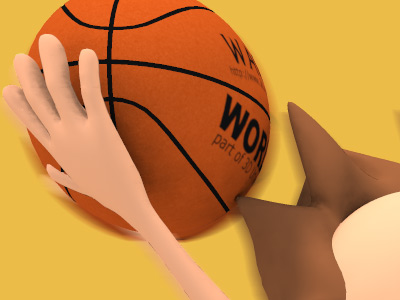
RESOURCES
This article uses material from the Wikipedia articles "Basketball", "Basketball playbook", and "Zone defense", which is released under the Creative Commons Attribution-Share-Alike License 3.0.
© Stories Preschool. All Rights Reserved.
